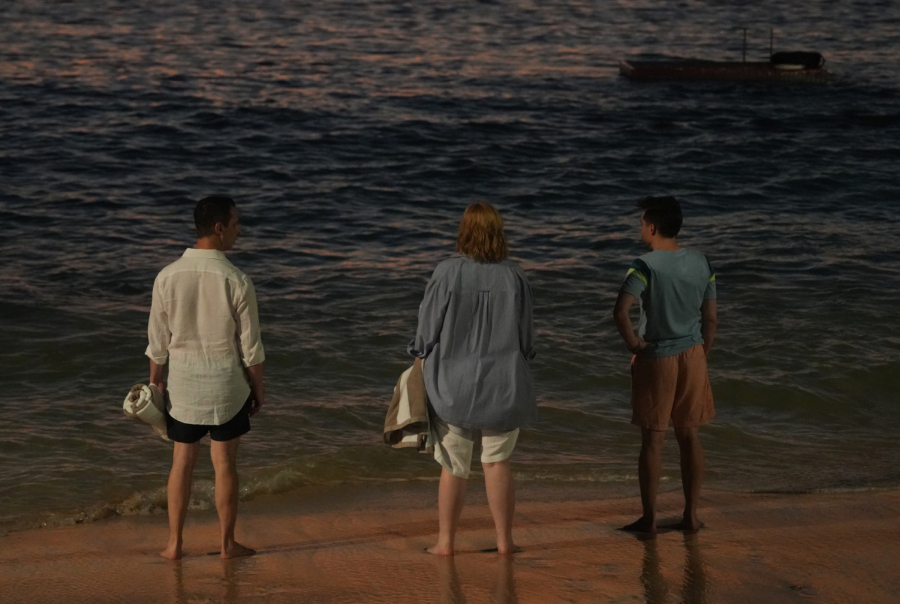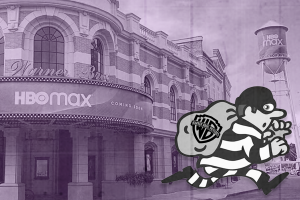Reflecting on ‘Succession,’ the End of a Dynasty
The series has come to an end after airing for five years, and its fourth season marked a haunting conclusion to the story of the Roy family
HBO
The story of the Roy siblings (played by Jeremy Strong, Sarah Snook, and Kieran Culkin) comes to a tragic, Shakespearean end.
June 13, 2023
Warning: This article includes spoilers for the fourth season of “Succession.”
HBO’s hit television show “Succession” aired its final episode on May 28, following a four-season run on the network and its related streaming service. Created by Jesse Armstrong, British screenwriter and producer, the drama series garnered 13 Primetime Emmy Awards from 2018 to 2023, the five-year period during which the show aired.
“Succession” follows the life of the fictional Roy family as the three youngest children — Kendall (Jeremy Strong), Siobhan (Sarah Snook) and Roman (Kieran Culkin) — fight for control over their father Logan Roy’s (Brian Cox) powerful media conglomerate, Waystar Royco. The eldest, Connor (Alan Ruck), largely avoids the boardroom dealings as he pursues a presidential bid. The family serves as an unsubtle nod to the real Murdoch dynasty, with Rupert Murdoch owning several media publication outlets through his company News Corp.
Amid the rebranding of HBO Max to “Max,” the conclusion of multiple hit television shows such as “Barry” and “The Marvelous Mrs. Maisel,” within the span of one week, and the Writers Guild of America’s ongoing strike for better treatment, the finale of “Succession” has come at a time of immense change in television.
The show itself has served as an example to look up to for the continued creation of thought-provoking, expansive television — a fact that has only become more important throughout ongoing drama surrounding streaming service cancellations and removals. With its cunning dialogue and slowly paced turns, “Succession” serves as a reminder of what can happen when showrunners are given the opportunity to create a fully fleshed-out story.
By closing “Succession” on its fourth season — coming as a shock to even some of the cast members — Armstrong was able to craft a final chapter that felt neither fatigued nor drawn out. Rather, the final season placed trust in the intelligence of its audience, leaving no easily tied up or digestible end. Because the creators ensured that every choice made by the characters made sense — even if they were heartbreaking — the viewer understood the motivations behind these choices.
The show delicately foreshadowed these choices, building them up gradually throughout the first few episodes of the season before shifting gears following the death of the Roy patriarch, Logan. Beyond their grief, the children must also handle Waystar’s relationship with the powerful tech company GoJo, headed by oddball Lukas Matsson (Alexander Skarsgård). While Logan’s actual death sneaks up on the viewer rather quickly, it sets off a chain reaction of power grabbing and grief that, in the face of GoJo’s decision to buy Waystar rather than let it be inherited, ultimately leads up to the final episode.
As Kendall peers out over the Hudson River at Battery Park, broken-down and defeated, yet still more wealthy than one could even imagine, the viewer is left to grapple with the cycles that plague even the most awful of people.
Many of the most notable episodes from the fourth season tap into this close relationship between genuine heartbreak and wide-eyed shock Patrick Capone’s, one of the show’s cinematographers since its first season in 2018, grandiose cinematography expertly traps the viewer within the high-intensity confines of a family waiting for bad news in “Connor’s Wedding” yet is able to beautifully zoom out in order to capture the swooping landscape and archaic mountains of Norway in “Kill List.” These emotions are supplemented by Nicholas Britell’s, Emmy-winning American film composer, already iconic score, which serves as the chilling, yet symphonic, backdrop for a story of operatic proportions.
At its core, “Succession” is a show about legacy. The final season carries out this theme in one concluding arc: A father is dead, and those who know him must fight for a piece of his legacy. It is, as the show has always been, incredibly Shakespearean in nature, with so many of the painful moments in this season stemming from the Roy family members’ complicated relationships with one another. One moment they are a family, laughing in their mother’s kitchen, and the next they are overflowing with vitriol, throwing insults at each other all in the name of succession.
It is the drama of the family dynamic, and the struggle for power among blood, that ultimately becomes the characters’ undoing. The audience can only sit in shock and watch as Kendall, Siobhan and Roman play into the parts that were always expected of them. Most notably, Kendall is the Macbeth of the story, and he presented as a power hungry character who thirsted for the crown. In the last episode (“With Open Eyes”), that deep-rooted hunger is cast as nothing more than a fantasy, promised in childhood to an immature man who never grew up. Kendall, like his other siblings, is essentially stuck as a child, yelling at others and using his status as the eldest son as a means of garnering respect.
The siblings cannot break past the behaviors and cycles they have always known which have been both literally and figuratively beaten into them by their father. Despite this, the viewer cannot help but root for them to do so anyway. As each season has reminded fans of “Succession,” it is not so easy to escape the coping mechanisms to which one clings in the presence of an angry, powerful man.
This claustrophobia is visually driven home in the season’s ninth episode, titled “Church and State.” The episode, which depicted Logan’s long anticipated funeral, ended by showing the audience the mausoleum where he had been buried. It also subsequently revealed the four empty slots that have been set aside for his children at the grave site. This is a powerful reminder to the viewer that these siblings, no matter how hard they might try, are seemingly destined to be trapped with Logan, even in death.
HBO’s “Succession” has consistently been striking in part because of the ways in which its main characters do not change. There is, for almost all of the characters, no real personal growth or evolution. Even by the final shot, the Roys remain as they always have been. As Kendall peers out over the Hudson River at Battery Park, broken-down and defeated, yet still more wealthy than one could even imagine, the viewer is left to grapple with the cycles that plague even the most awful of people. As the show has continually reminded us, there can be sympathy, and maybe even a little delight in watching childish people lose.
















